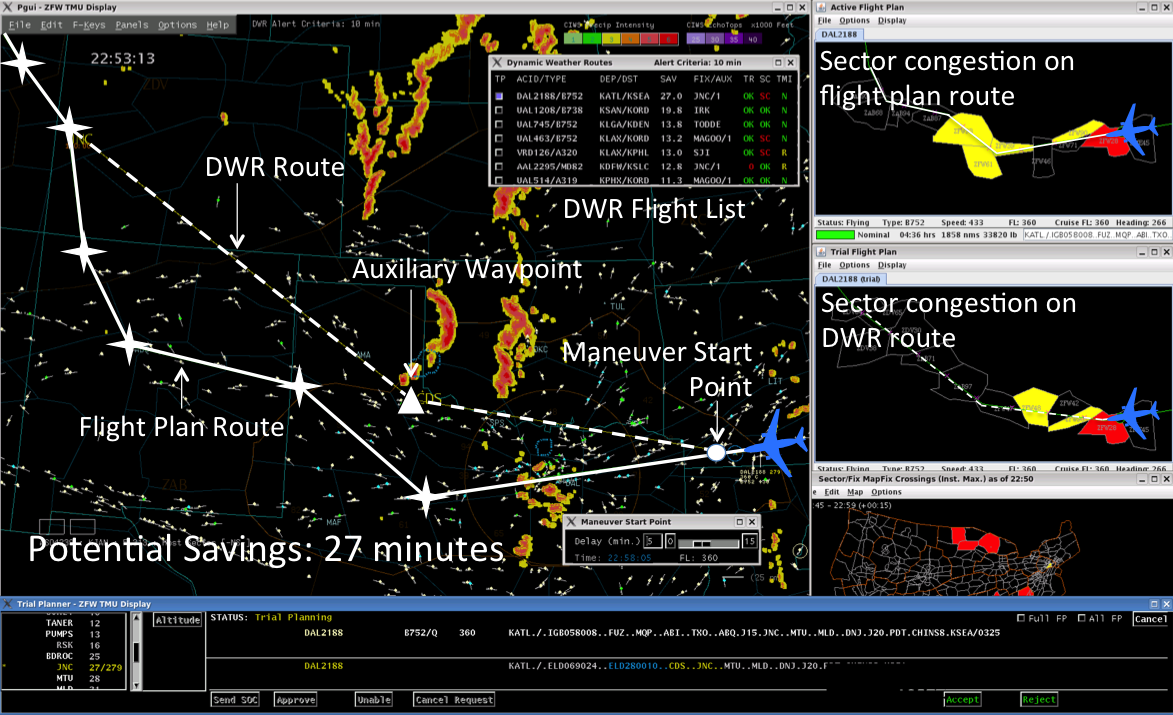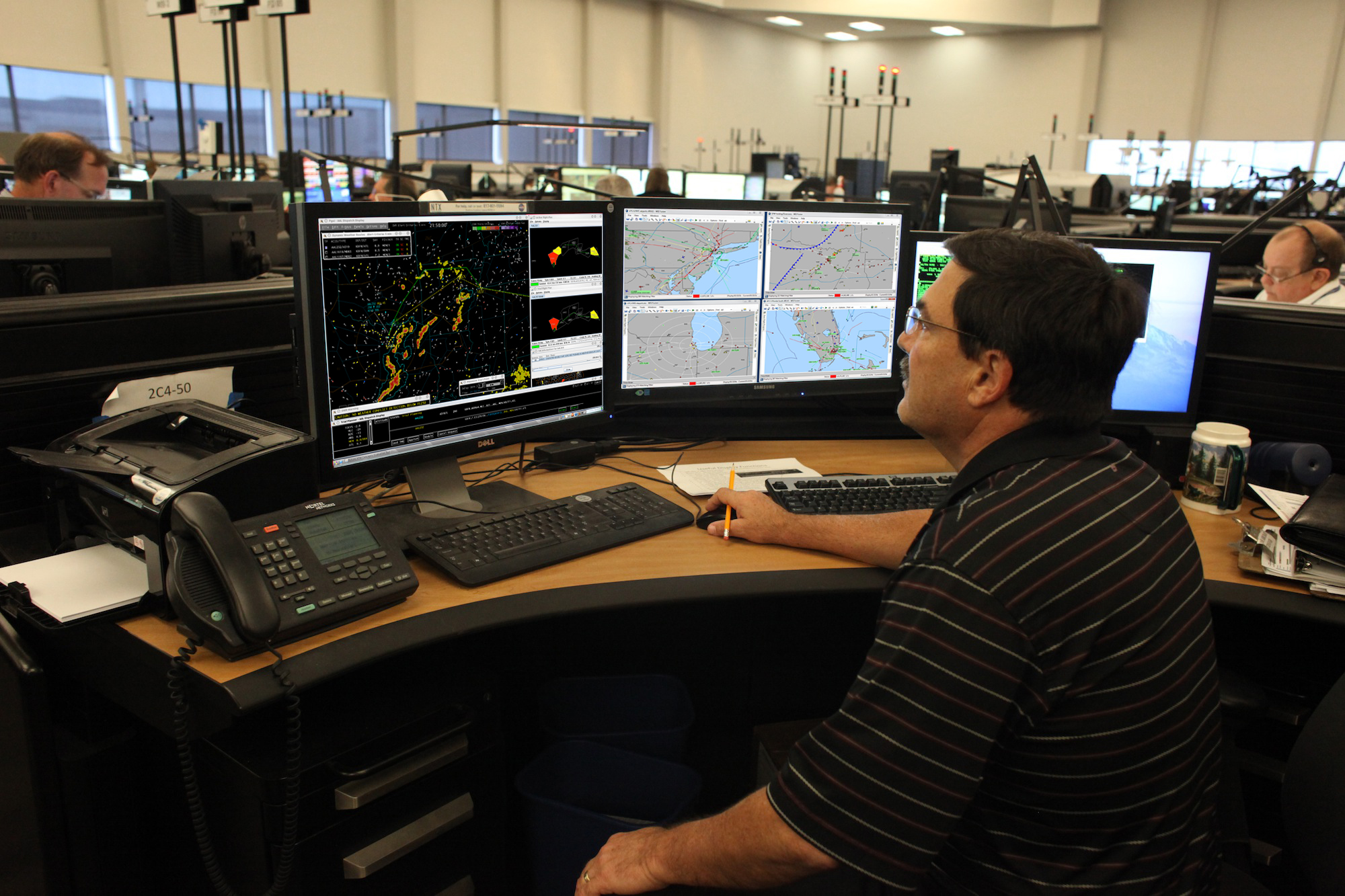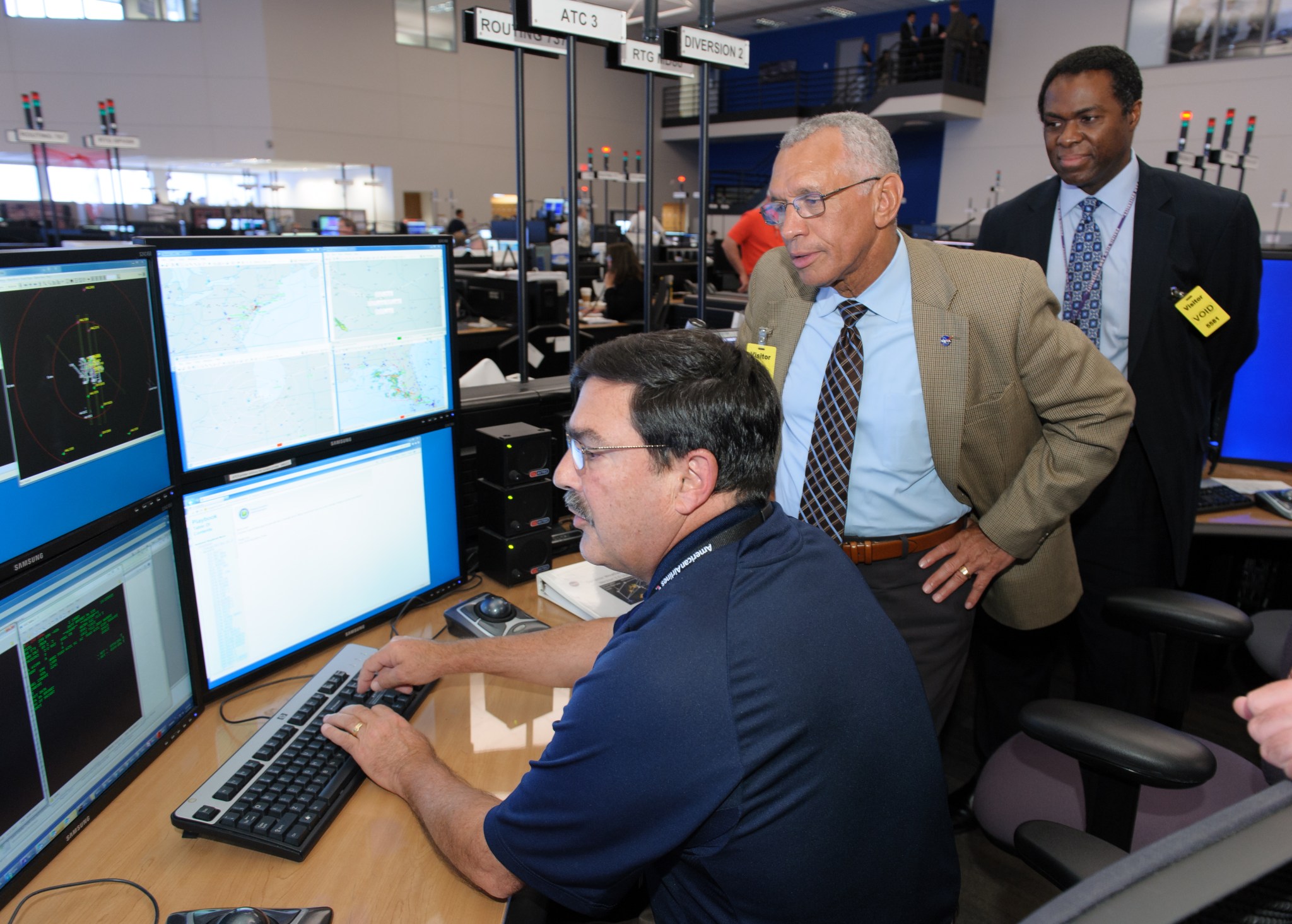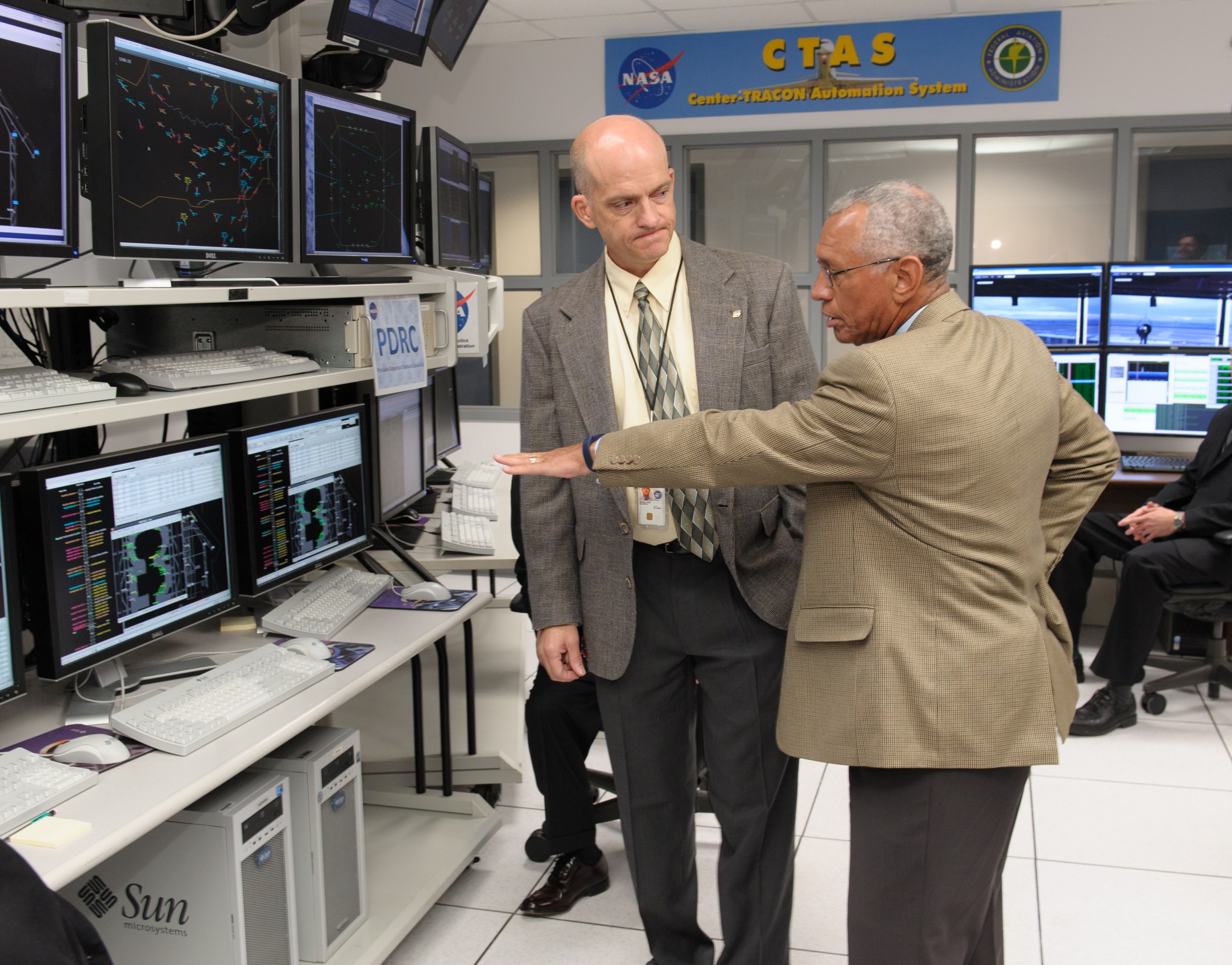In the heat of a summer afternoon, a line of thunderstorms develops in the skies over North Texas and threatens to wreak havoc with the timely flow of air traffic headed toward or away from Dallas/Fort Worth International Airport.
One look at the weather radar tells the grim story: airlines will lose money as jets burn extra fuel to avoid the storms and aggravated passengers will miss connections as flights are delayed. No one will be happy.
Fortunately, a NASA-developed tool designed to alleviate some of those weather-induced interruptions and resulting frustrations is testing well in ongoing field trials that involve American Airlines and the Federal Aviation Administration (FAA).
Known as Dynamic Weather Routes, or DWR, the computer software tool is programmed to constantly analyze air traffic throughout the National Airspace System, along with the ever-shifting movements of weather severe enough to require an airliner to make a course change.
When the DWR tool finds an opportunity for an airliner to fly more efficiently to its destination, saving time and money, while also remaining a safe distance from the storm, the computer rings an alert to an airline flight dispatcher that sounds like “cha-ching.”
No kidding, and it’s totally apt.
American Airlines has been evaluating DWR since 2012 and noted, for example, that on one flight of a Boeing 777 flying from Dallas/Fort Worth to Buenos Aires, the software tool helped shave 26 minutes from the original planned route around a line of thunderstorms.
With an average fuel burn rate of 14,500 pounds/hour, the estimated savings for that flight was approximately 6,283 pounds, or more than $2,500 in fuel costs.
For another American flight, a Boeing MD82 flying from Dallas/Fort Worth to New Orleans, the tool helped save 31 flying minutes or about 3,600 pounds of fuel, or about $1,400 in fuel costs.
“The feedback we’ve received from American Airlines has been very favorable,” said David McNally, lead engineer for DWR at NASA’s Ames Research Center in California.
“Analysis of the DWR test data indicates there was an estimated savings of 3,355 flying minutes for 538 American Airlines flights from July 2012 through September 2014, or about 6.2 minutes per flight on average,” McNally said.
If those same numbers held for the approximately 15,000 flights flying through North Texas in 2013 for which DWR identified reroute opportunities, the savings in flight time could add up to about 100,000 flying minutes – or more than two months’ worth of fuel burning and time not wasted in the air.
“As much as I love flying, like most people I don’t want to spend any more time getting to where I’m going than I have to. This DWR tool, developed and tested by NASA in partnership with American Airlines and the FAA, is going to benefit everyone who flies,” said NASA Administrator Charlie Bolden.
Bolden, along with other NASA managers and representatives from the FAA, American Airlines and the Dallas/Fort Worth International airport, recently toured some of the Texas facilities where DWR is being evaluated and refined.
Much of the work on DWR, and other air traffic management tools, takes place at the North Texas Research Station (NTX), a joint NASA/FAA laboratory located near the Dallas/Fort Worth International Airport, and across the street from where American Airlines is headquartered.
Inside the non-descript concrete building, NASA’s aeronautical innovators work with the FAA to develop and implement advanced concepts and technologies required for the Next Generation Air Transportation System, or NextGen.
“With the ability to work closely with the FAA, airport and airline personnel, as well as having access to the area air traffic and weather data, the NTX laboratory is an ideal location for testing NASA’s air traffic management decision support tools,” said Shawn Engelland, a NASA engineer stationed at NTX.
Another example of the work coming out of the NTX is an air traffic management tool known as Precision Departure Release Capability, or PDRC, which also was showcased during the recent visit by Bolden and others to the laboratory.
With PDRC controllers will be better able to predict exactly when an airliner can depart its gate so as to taxi, take off and smoothly join with the busy air traffic lanes overhead. The tool is intended to help improve the overall efficiency of air traffic management by reducing missed or delayed departures and allowing more aircraft to depart within a given timeframe.
Tests of the software conducted during the past few years show that PDRC could help fill as much as 80 percent of the slots in the constant overhead stream of air traffic that usually go empty because of timing issues on the ground.
NASA turned PDRC over to the FAA in 2013 for additional evaluation and eventual implementation.
“The FAA and NASA have a long history of collaborating on technologies that enhance safety and improve efficiency,” said FAA Southwest Regional Administrator Kelvin L. Solco. “Some of these tools are in use on a daily basis in North Texas, helping the FAA to deliver NextGen air traffic control now.”
Air traffic management software tools such as DWR and PDRC are developed by NASA’s Airspace Systems Program, and support the agency’s goal to facilitate safe, efficient growth in global operations that will enable full deployment of NextGen in the United States by 2035.





































